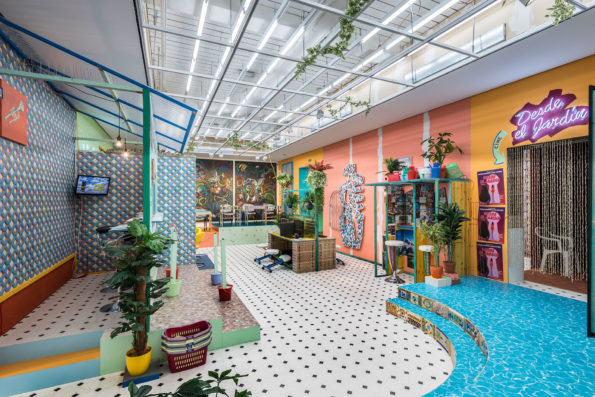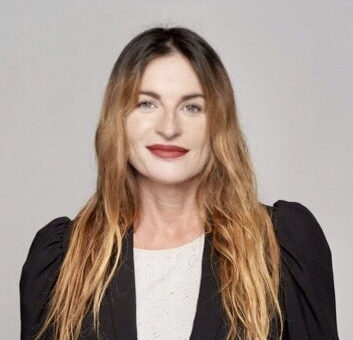Search
To search for an exact match, type the word or phrase you want in quotation marks.
A*DESK has been offering since 2002 contents about criticism and contemporary art. A*DESK has become consolidated thanks to all those who have believed in the project, all those who have followed us, debating, participating and collaborating. Many people have collaborated with A*DESK, and continue to do so. Their efforts, knowledge and belief in the project are what make it grow internationally. At A*DESK we have also generated work for over one hundred professionals in culture, from small collaborations with reviews and classes, to more prolonged and intense collaborations.
At A*DESK we believe in the need for free and universal access to culture and knowledge. We want to carry on being independent, remaining open to more ideas and opinions. If you believe in A*DESK, we need your backing to be able to continue. You can now participate in the project by supporting it. You can choose how much you want to contribute to the project.
You can decide how much you want to bring to the project.

If I write the word ‘Caribbean’ in an image search engine on the Net I obtain hundreds of photographs that systematically feature a turquoise-blue sea and lots of palm trees — around five hundred images before we see a building or a map. The Royal Spanish Academy (RAE, for its initials in Spanish) defines the adjective ‘tropical’ as pompous, luxuriant or exaggerated and, once again, the search engine produces a series of photos and figurative patterns with palm trees, fruit, flowers and exotic animals (exotic: foreigner from a remote country/place and perceived as being very different to one’s own. Second sense: strange, surprising, extravagant). This visual and semantic standardisation creates a cliché that has distinguished the identity of the whole of Latin America bathed by the Caribbean Sea. The work by artist Sol Calero is based precisely on an exotic and banal notion of the Tropic. She is ‘parameterised’ on the Net — seeking images of Sol Calero we discover an imaginary that reveals herself and all the above: exuberance, colourful clashes and a slightly kitsch aesthetic generated by a simplification process built on stereotypes and idealised constructions.
Based in Berlin, Sol Calero (Caracas, 1982) is one of the four artists who were nominees in the Preis der Nationalgalerie 2017, an event for which every two years experts and institution directors select young artists who, according to the organisation, are important for contemporary art and reflect the international nature and vitality of the German art scene. Calero creates hybrid installations that operate as socialisation environments and contact zones. Her starting point and source of research refer to a typically Latin American awareness and to its iconic forms of aestheticisation. She plays with the notions of representation, identity and marginalisation, informed by her South American predecessors and by her own perspective as a migrant. In her installations of the past five years she has been exploring and recreating the strategies of socialisation and self-construction – of opportunity and of settlement – and their aesthetics.
Being a nominee at the aforementioned prize meant exhibiting at the Hamburger Bahnhof in Berlin (till the 14 January 2018) along with the other three runners-up. Sol Calero has made the huge Amazonas Shopping Center project for the occasion, conceived as a retrospective of her own works of the past four years. The visitor walks into a shopping centre that has a number of social spaces including a hairdressing salon, a sauna, an exchange bureau, a cybercafé, a travel agency, a salsa school and a cinema. All the pieces have been displayed before in solo exhibitions at her London gallery and in fairs, as well as in other German art centres. Such commercial spaces, that are often found in Latin American countries or are administered by immigrants in their destination countries, create a community dynamics that transcends into the products and services they announce and that, just like the people handling them, are constructed to favour flexibility, adaptation and improvisation.
‘I want to create spaces in which to reflect, but also in which to interact. I want to address how the spectator feels rather than what he sees. These projects work in two directions: one is the social aspect of space and the experience it creates, and the other is its aesthetic aspect or, if you prefer, the project’s formal aspect’, she declares.
In conceptual terms, each space represents a series of sociopolitical problems. Casa de cambio (Exchange Bureau, 2016) is a place of negotiation that highlights the fragility of currency flow, the erratic situation of Venezuela and the contradictions of our own value systems. A place of hope, yearning and nostalgia where the decorative, the distracting and the comical become vital elements of everyday activities. Ciber café (Cybercafé, 2014) is a point of access to information typical of areas with no generalised access to the Internet, where people sit and chat with their relatives in distant countries or discuss their daily affairs in prepaid time slots. Its terminals present thirteen video works selected by Sira Pizà, most of them made by artists of Latin American origin, that address themes derived from imperialism and colonialism.
Agencia Viajes Paraíso (Paradise Travel Agency, 2017) is based on the construction and self-constitution of countries as tourist destinations. In this project, Calero points to the tourist as a collector of experiences and to travel as another form of consumption. The agency, with its constructed images, posters, brochures and necessary planning, is the most obvious testimony of the creation of the exotic as a notion. Moreover, it reveals how the temporary condition of the traveller distinguishes the tourist from the migrant, proving that access to global mobility is the final factor of stratification in the globalised age. Por su lado (Separately, 2015), La escuela del sur (The School of the South, 2015) and Salsa (2014) deal with the transmission of knowledge, but they also reflect on cultural appropriationism and the importation and exportation of cultural icons that in their new places of consumption become clichés. Stereotyped visions of different and distant societies turn into notions of otherness that are rebuilt over the course of history in language and popular culture.
In these pieces, the social power of Latin music stands out as a true testimony of the racial integration of Spanish speakers: salsa has been a constant interest for Calero on account of its great lyrical content, which deals with heartbreak and chauvinism as well as cultural and political themes. Although music and dance have contributed to raise interest in Latin American culture, they have also generated excessive idealisation, aestheticisation and exoticism, evoking a hazy picture of the daily reality of Latin America.
As we were saying earlier, Calero’s installations are triggered by activities that transform exhibitions de facto into spaces of socialisation where aspects that involve cultural recreation or appropriation are made evident. The spectator plays an active part in the installation. Salsa lessons were taught on the day of the exhibition opening in Berlin, an edition of Casa de cambio was sold and a hairdressing service was offered. The cinema will screen Desde el jardín (From the Garden, 2016), a soap opera in chapters made in collaboration with Dafna Maimon and produced by CONGLOMERATE, a work in progress that involved four other artists and was presented in instalments, emphasising the social dynamics portrayed in soaps: gender roles, socio-economic position and class aspirations through storylines of grief, envy, infidelities, family drama and tragic twists.
Bienvenidos a Nuevo Estilo (Welcome to Nuevo Estilo, 2014) is a beauty salon that includes La sauna caliente (The Hot Sauna, 2016). In Venezuela, a hairdressing salon is a meeting place where news is shared, and products that are no longer on the market can be purchased. In its turn, the spa is a reference to the cult of the body and well-being in the institutionalised practice of image-making, a key contemporary demand.
Calero moved to the Canary Islands with her family when she was seventeen. Almost from the beginning of her career she has called her artistic practice into question, along with her search for her own identity as an artist and her responsibility in bringing social and political problems to light. Virtually all the projects made by this Venezuelan artist in recent years are collaborative in nature: ‘Collaborations with other creators are very important in my practice; they give visibility to Latin artists and emerge in a very organic fashion, partly due to the fact that I work and come into contact with them at Kinderhook & Caracas, a project space I codirect’.
The formalisation of these aspects is reflected in her works, in which she addresses the perception of exoticism applied to Latin America, stressing precisely the idea of the other. Her artistic installations are not only scenarios; they also provide a critical space for challenging this marginal otherness while displaying an iconographic tradition that has been excluded from the canonical narratives in art history.
[1] Lidia Santos (2001), Kitsch Tropical: Los Medios En La Literatura Y El Arte De América Latina. Madrid: Vervuert, pp. 93-102
[2] Umberto Eco, Apocalittici e integrati (1964). The main essay is included in Apocalypse Postponed, Robert Lumley (ed.), Indiana University Press, Indiana, 1994.
[3] Sontag, Susan, Notes on Camp. Essay first published in 1964. Available at https://monoskop.org/…/Sontag_Susan_1964_Notes_on_Camp.p…
[4] The Brazilian Tropicalist movement was one of the first to ironise on the sociocultural situation of the area in the sixties. Tropicália was a fusion of avant-garde Brazilian culture and international trends. Through film, music, art and literature the movement reduced the sociocultural differences between Latin America and Western Europe.

María Muñoz-Martínez is a cultural worker and educator trained in Art History and Telecommunications Engineering, this hybridity is part of her nature. She has taught “Art History of the first half of the 20th century” at ESDI and currently teaches the subject “Art in the global context” in the Master of Cultural Management IL3 at the University of Barcelona. In addition, while living between Berlin and Barcelona, she is a regular contributor to different media, writing about art and culture and emphasising the confluence between art, society/politics and technology. She is passionate about the moving image, electronically generated music and digital media.
Portrait: Sebastian Busse
"A desk is a dangerous place from which to watch the world" (John Le Carré)